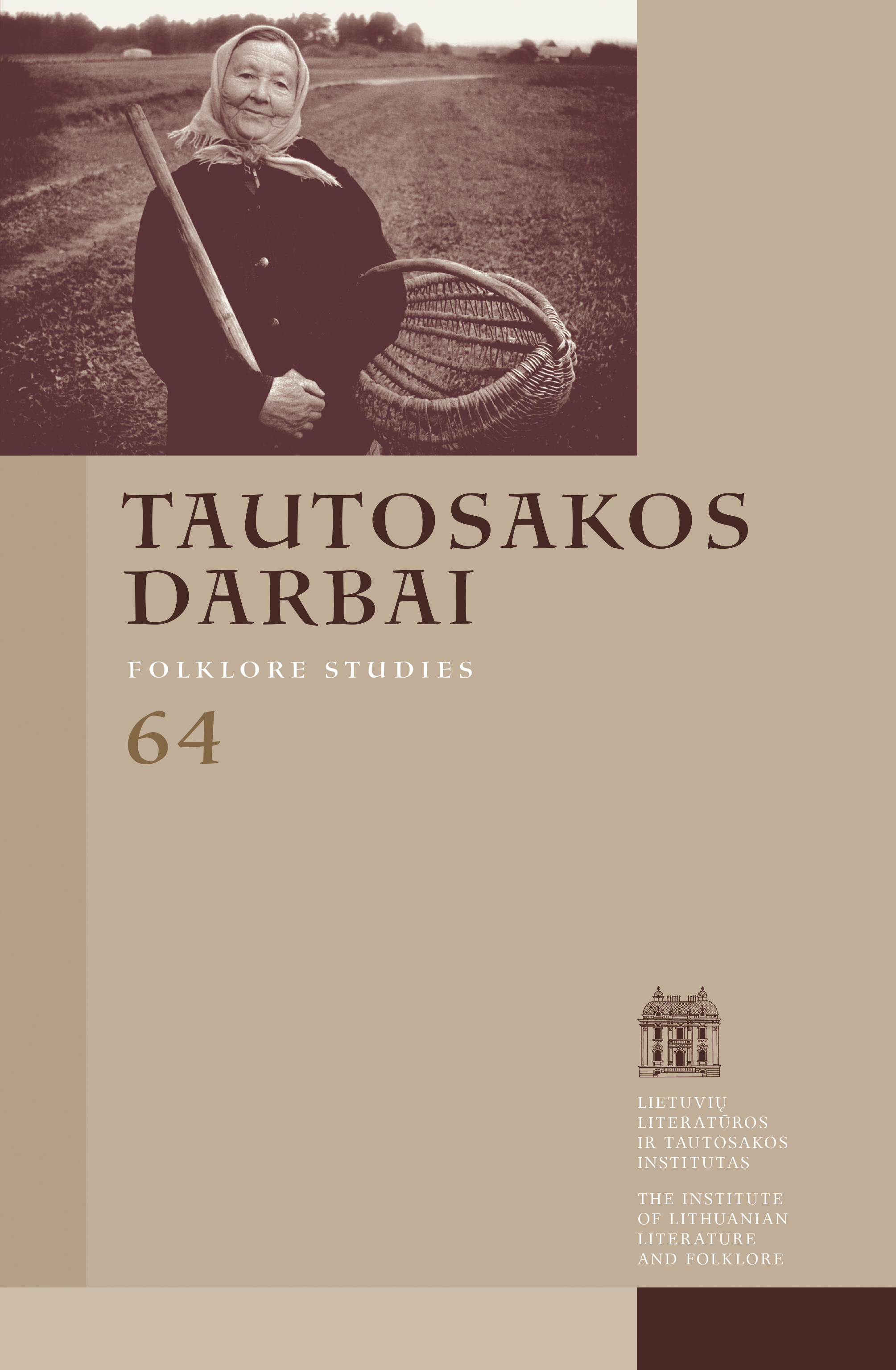Pasakų sekėja XX–XXI a. sandūroje: subartoniškės Antaninos Čaplikienės atvejis
Santrauka
2000 m. Lietuvių literatūros ir tautosakos instituto darbuotojai, atlikdami lauko tyrimus, susipažino su Subartonių (Varėnos raj.) gyventoja Antanina Glaniauskaite-Čaplikiene (1922–2016) – ji pateikė apie 140 pasakojimų (iš jų 69 pasakas, 9 sakmes, 3 padavimus, 6 sapnų pasakojimus, 40 biografinių pasakojimų, keletą anekdotų). Peržvelgus iš moters užrašytą pasakojamosios tautosakos repertuarą, kilo klausimas, kaip A. Čaplikienė sugebėjo išlaikyti tokią ryškią folklorinę atmintį. Siekiant tai išsiaiškinti, straipsnyje pasitelkiama vengrų folkloristės Lindos Dégh išplėtota pasakų sekimo konteksto tyrimų atšaka – pasakų biologija (vok. Märchenbiology). Analizė atliekama keliais aspektais: 1) atsižvelgiant į bendrą Dzūkijos folkloro tradiciją ir į A. Čaplikienės gyvenimo aplinkybes, formavusias ją kaip pasakotoją, aptariamas moters pateiktas pasakojamosios tautosakos repertuaras – kiek ir kokių kūrinių papasakota, kaip jie įsikomponuoja į lietuvių sakytinę tradiciją; 2) analizuojami A. Čaplikienės prisiminimai apie pasakų sekimą praeityje, aptariama, kaip ji bendravo su folkloristais, atvykusiais užrašyti jos sekamų pasakų. Straipsnyje siekiama išryškinti šios pasakotojos išskirtinumą – kuo ji unikali XX–XXI a. sandūros ir apskritai Dzūkijos pasakojamosios tradicijos kontekste.
Atsisiuntimai
Skaitomiausi šio autoriaus(ų) straipsniai
- Jūratė Šlekonytė, Lietuvių stebuklinė pasaka „Sutartis nesiprausti“ (ATU 361): europinis kontekstas ir lokalieji ypatumai , Tautosakos darbai: T 66 (2023): Tautosakos darbai
- Jūratė Šlekonytė, Pasakų sekėjos moterys ir jų repertuaro ypatumai , Tautosakos darbai: T 67 (2024): Tautosakos darbai
- Jūratė Šlekonytė, Lietuvių pasakų tyrimų šimtmetis: nuo tradicinės komparatyvistikos iki šiuolaikinių metodų , Tautosakos darbai: T 49 (2015)
- Jūratė Šlekonytė, Augustas Schleicheris – pirmasis lietuviškų pasakų skelbėjas , Tautosakos darbai: T 61 (2021)
- Jūratė Šlekonytė, Nauja knyga apie stebuklinių pasakų simbolizmą , Tautosakos darbai: T 67 (2024): Tautosakos darbai
- Jūratė Šlekonytė, Lietuvių liaudies pasakos „Antimi pavirtusi sesuo“ populiarumo fenomenas , Tautosakos darbai: T 57 (2019)
- Jūratė Šlekonytė, Pirmieji fundamentinio čekų pasakų leidinio tomai , Tautosakos darbai: T 64 (2022)
- Vita Džekčioriūtė, Aušra Žičkienė, Jūratė Šlekonytė, Gražina Kadžytė, Jurgita Ūsaitytė, Lina Būgienė, Daiva Vyčinienė, Kronika , Tautosakos darbai: T 48 (2014)
- Jūratė Šlekonytė, Lietuvininkų sakmės apie laukinę medžioklę: vaizdinio kilmės klausimu , Tautosakos darbai: T 47 (2014)
- Jūratė Šlekonytė, Ar mums reikia pasakų? Atsakymą duoda Bruno Bettelheimas , Tautosakos darbai: T 55 (2018)
